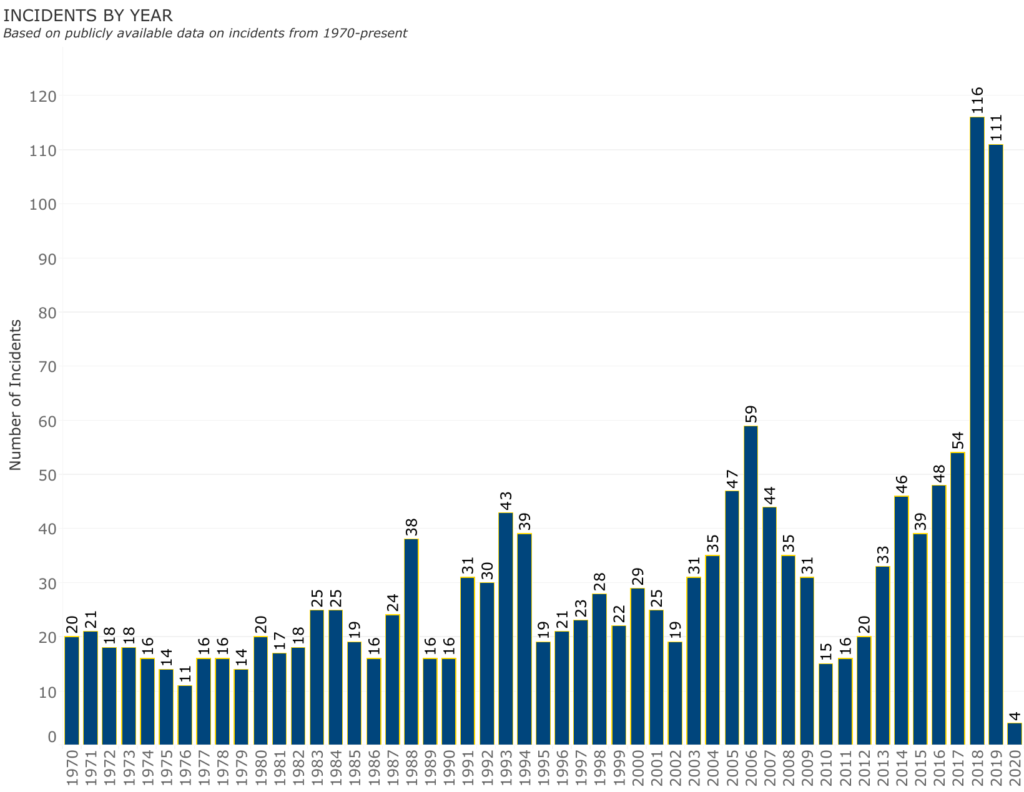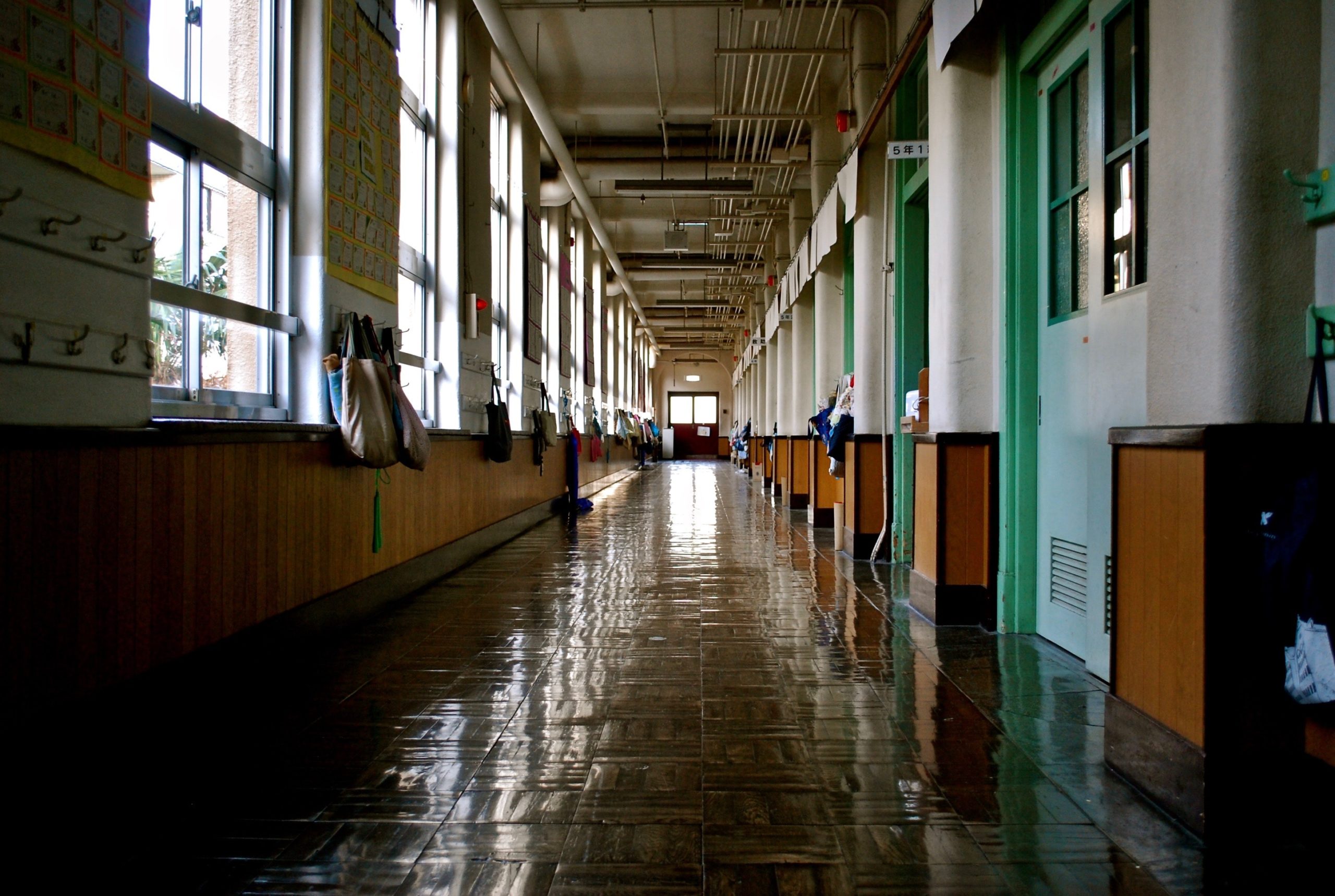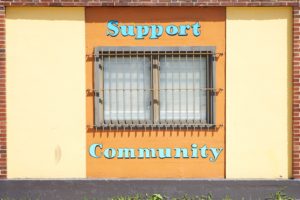School shootings have increased in severity and frequency over the past decade. By numbers, 2018 experienced the most school shootings with 116 and the most fatalities on record with 63. Both of these statistics nearly double any prior year. In response, schools have “hardened” their environments, investing in more police, metal detectors, and traumatic active shooter drills. In a particularly realistic shooting drill at one elementary school in Indiana, teachers were grouped, forced to crouch down, and shot execution-style with pellet guns.
But to what end is hardening school campuses effective? Evidence suggests that these approaches may be harmful to students. An article by Warnick and Kapa argues that students feel less safe at schools with visible security measures, adding that students report feeling more fear if they attend schools with school resource officers (SROs).((Warnick, B. R., & Kapa, R. (2019). PROTECTING STUDENTS FROM GUN VIOLENCE: DOES” TARGET HARDENING” DO MORE HARM THAN GOOD?. Education Next, 19(2), 22-30.)) Instead of imitating carceral systems, schools need to offer students the emotional, and mental health supports they need to thrive. Providing support to students can help them feel safer, cope more effectively, and ultimately be better able to focus on learning and developing.

From the Missouri perspective
Having attended, graduated, and volunteered in Missouri public schools, I will focus on the severe need to provide supportive services in Missouri. In 2015, more than 80% of Missouri’s youth did not receive needed mental health services, according to the Missouri Department of Mental Health. School social workers and counselors are often the first people to assess mental health in young people and connect them to support. Yet social workers are massively understaffed and overworked. In Missouri, there was one social worker for every 2065 students during the 2017 school year, which is more than eight times the suggested ratio of one social worker for every 250 students.
While schools are under-funding support staff, suicide rates have increased by 30% in the United States since 1999, according to the Center for Disease Control and Prevention. The rates are more tragic for youth. Children ages 10 to 17 have had a 70% increase in suicide rate from 2006 to 2016, further highlighting the need for mental health screening, treatment, and suicide prevention in our country and especially our schools.
Despite evidence that schools’ principle crises is the failure to address students’ mental health needs — not violence — school districts have continued to harden schools. There has been a persistent shift of resources away from social workers and towards school security guards. These shifts reflect our country’s inequities, as minority students are more likely than white students to attend schools with security guards but no social workers.
On incarceration
According to the American Civil Liberties Union’s (ACLU) report Cops and No Counselors, schools with police officers arrest 3.5 times more students than schools without a police presence.1 School security officers are more likely to make law enforcement referrals or incarcerate their students, perpetuating the school to prison pipeline. ACLU’s research has also shown that gender, race, and special education status best predict who will be suspended. For instance, black students will be referred for less severe and more subjective issues than their white peers. Therefore, black students, and other students of color have the most to gain when we invest in social workers instead of security guards.
ACLU cites numerous, disastrous effects when adolescents are incarcerated. These include higher rates of mental health problems, more violent behaviors, and limited educational and vocational opportunities. These adverse outcomes cause a lasting personal expense, but there is also a direct fiscal cost to incarcerating youth. The Missouri Division of Youth Services reports an annual expense of $82,260 per incarcerated youth in 2017. However, Missouri spent $10,313 annually per student for education in 2016, costing eight times as much to incarcerate our youth than to educate them. In Missouri, and in other states, our investments reflect our values. Instead of incarceration, we should elect to educate our youth and provide opportunities for growth.
Shifting our priorities
When schools invest in mental health services, there is improved attendance, academic achievement, higher graduation rates, and overall school safety. Likewise, mental health service investments reduce rates of suspensions and expulsions. There is a wealth of data showing the need for more social workers and counselors, yet no evidence that school-embedded police improve school safety. Nevertheless, in the United States, there are 10 million students in schools with police officers, but no school social workers.
We need to shift priorities and the perception of safety in schools in the United States. I completed a social work practicum assignment in a public high school in Saint Louis City. During that time, students would regularly come to the social work office to discuss issues such as parents not accepting their sexuality, difficulty with assignments, and witnessing community violence. We worked with students to process emotions, identify coping skills, and connect them to community resources. Meanwhile, multiple viral videos have been released of school security officers striking and body-slamming students. I argue that more training for these officers is insufficient. Instead, schools should shift funding from security officers to social workers and counselors. I advocate for this approach outside of schools as well.
Leveraging funds from police and traditional public safety could provide mental health outreach workers to better serve the evolving needs in our communities. Workers trained in de-escalation and connected to community resources could provide strong support to people — far more valuable than being faced with a gun and the threat of an arrest.
- Schools Need More Social Workers, Not More Cops - January 14, 2020
- The American Civil Liberties Union. (2019). Cops & No Counselors: How the Lack of School Mental Health Staff Is Harming Students. [↩]





Pingback: Intervene Upstream Issue 2: Creativity & Social Work » Intervene Upstream, the online peer-reviewed public health publication for graduate students